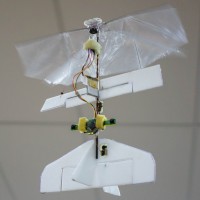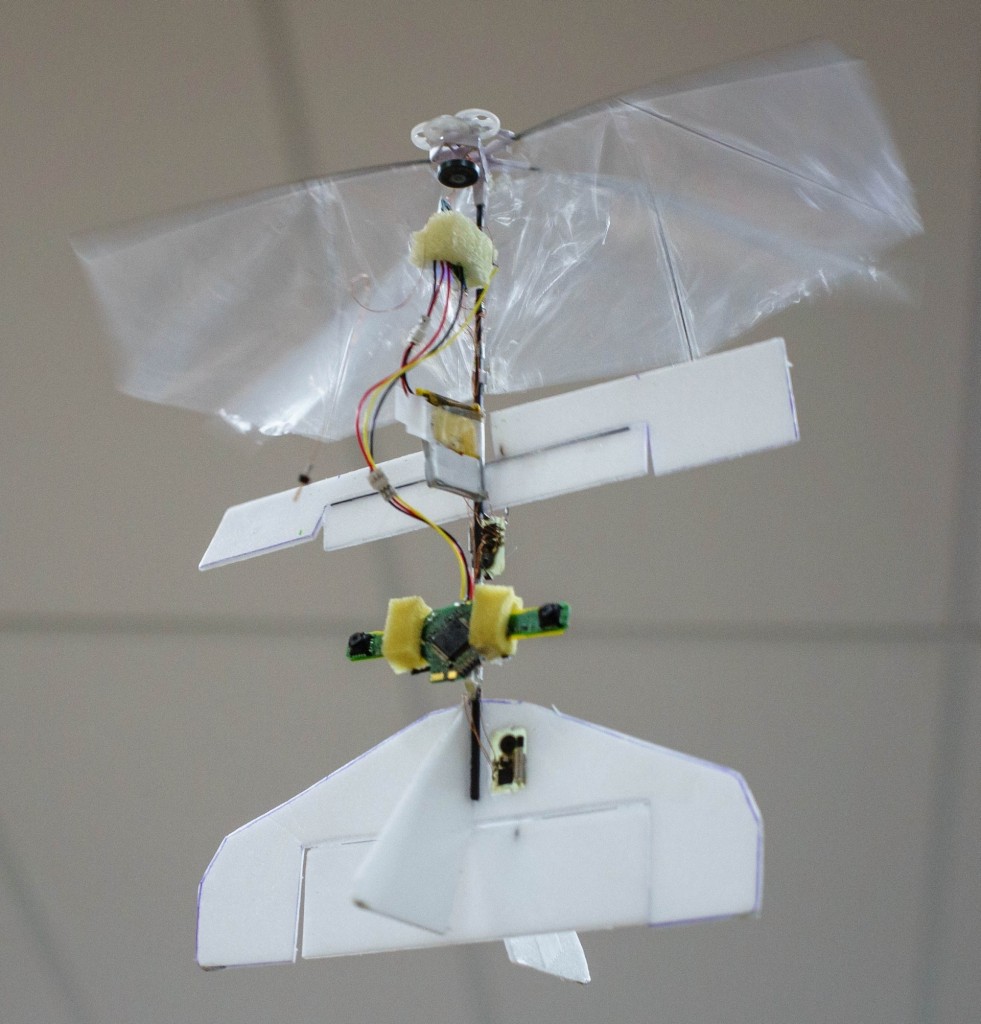Flapping-wing Micro Air Vehicles (FWMAVs) are bio-inspired flying robots mimicking small birds and insects. Compared to drones with rotors (e.g. quadrotors), flapping-wing MAVs could potentially be more efficient, more agile and less dangerous in case of an accident. The flapping-wing MAVs developed at TU Delft are the state of the art of the field, including the smallest camera equipped ornithopter in the world, the DelFly Micro, and the first autonomous flapping-wing MAV, the DelFly Explorer.
Flapping of the wings leads to very complex dynamics and aerodynamics, which are challenging to model and a topic of extensive research. The low Reynolds number aerodynamics in particular, rely heavily on unsteady mechanisms. Additionally, collecting free flight data for FWMAVs is challenging, as it requires advanced sensors or specific testing facilities that are not widely available. For these reasons, there are currently no aerodynamic models that accurately represent flapping-wing flight across the full flight envelope. Existing models typically have a limited applicability range and are rarely validated with flight data. Theoretical and numerical models are also often extremely complex and not applicable in practice. However, accurate aerodynamic models are essential for flight control and simulation, and to obtain a better understanding of flapping flight.
For this research project, the DelFly FWMAV is used to study flapping-wing flight using a data-driven system identification approach. This approach is possible thanks to the extensive set of flight data collected for the DelFly by means of optical motion tracking, combined with state of the art on-board inertial sensors. Based on this data, low-order models for the dynamics and aerodynamics have been developed for slow forward flight. In addition basic models of the flapping aerodynamics have been created. Current research efforts are focused on extending the coverage of models over the flight envelope, developing models for the aerodynamics effects of the tail, and investigation of possible coupling effects between time-averaged and sub flap-cycle dynamics.
The research efforts in this project are currently focused on:
- Creating models of the DelFly that cover the flight envelope from hover to fast forward flight.
- Robust fusion of external sensors with onboard inertial sensors.
- Investigating existence coupling effects between time-averaged and sub flap-cycle dynamics.
- Investigating the effects of the tail on the fligh dynamics of DelFly



